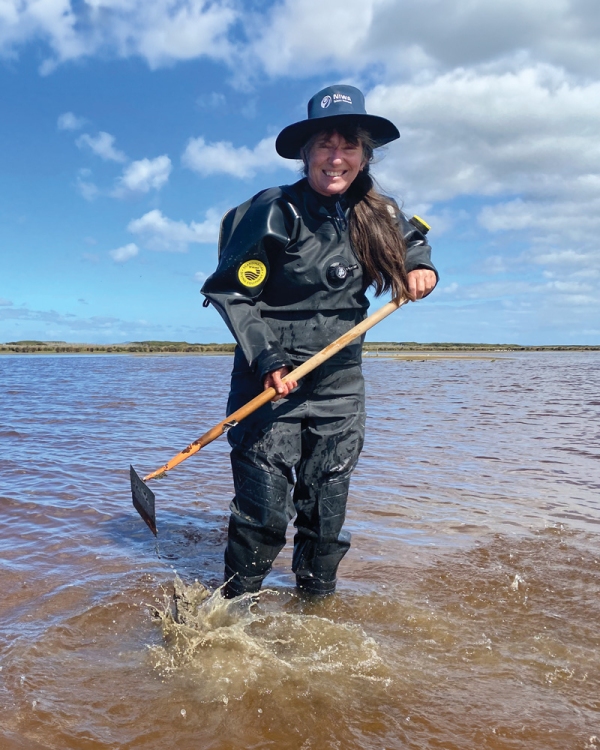Quillwort, egeria and hornwort might sound unfamiliar to most, but Mary de Winton can identify each of these aquatic plants – and about 150 others – just by looking at them.
It’s a skill she’s mastered over four decades, working as a freshwater ecologist and scientific diver. In that time, she’s completed an incredible 3,000 dives.
“I find diving quite therapeutic. You get in your Zen space. You’re weightless, you’re floating; observing and running through questions in your mind about what you’re seeing and how you’re recording it.”
Diving has been integral to de Winton’s career. She currently manages NIWA’s Hamilton-based Aquatic Plant Group, a team specialising in freshwater plant ecology, survey and management.
The team is heavily involved in freshwater biosecurity, running long-term monitoring programmes and providing guidance and solutions on aquatic weed management for the likes of councils and hydrogeneration companies.
A lot of her time is spent out in the field, often submerged in New Zealand’s network of waterways and lakes. Growing up in Hamilton, de Winton showed an early curiosity with the natural world.
“I’m sure my mother would be able to tell stories about me out in the trough with the ducklings and the frogs,” she laughs.
This early interest morphed into a BSc in animal physiology and behaviour from the University of Waikato and, soon after, a role with the Ruakura Agricultural Centre’s aquatic plant group.
“I was initially more interested in animals at the time, but was super fortunate to have my MSc funded by the Ministry for Agriculture and Fisheries, focusing on aquatic weeds – that was my cross over to the ‘green side’!”
She’s been splashing around in freshwater ever since and is now widely recognised as a leading expert in aquatic plants.
Invasive weeds are a huge problem in our freshwater systems. These alien species degrade water quality, outcompete native species and disrupt hydroelectric power schemes.
“They’re the ultimate space invaders, growing taller and denser than anything else and just taking over.”
Since the early 2000s, the team have used a monitoring technique developed by NIWA called LakeSPI (Submerged Plant Indicators) to measure two major influences on lake ecology: increased sediments and nutrients, and the impact of invasive weeds on the lake’s native vegetation.
Divers head beneath the surface with clipboards and waterproof paper to survey the plants growing from the lake edge down to the lake floor.
“It tells us about the ecological condition of our lakes from the point of view of plants, because plants reflect their environment.
“When you’ve worked in the field as long as I have, you see the deterioration first hand, particularly when you’re going to places again and again.”
“We’re constantly looking at how can we develop the next tool – how can we develop better ways of detecting weeds earlier and thinking of new, innovative ways to control weeds and other aquatic pests.”
And it’s not just about eradicating invasive species, the team are also finding ways to restore native plants.
“If you’re controlling the aquatic weeds, you’re helping the natives to come back. So, we’re always thinking about how to make the habitat better for them and speed up their recovery in degraded lakes.”
She’s still diving, but these days she’s starting to ease back from the fieldwork and turning her attention more to training and sharing her extensive knowledge with the next generation of scientific divers and aquatic plant specialists.
“I’ve got a really good team at various stages of learning, some quite experienced and some learning the ropes, so now it’s all about passing on that information.”
It also gives her more time to work with her favourite plant group, the charophytes.
“They’re algae, but they look like plants. I just find them fascinating. There are about 22 species found in New Zealand and they can be difficult to tell apart. I’m trying to work out better ways of identifying which ones are which.”
De Winton has dived in over 200 lakes throughout the country. Asked which is her favourite, a question she’s had countless times, she says it changes continually.
“You go to another water body and have a really nice experience and suddenly that’s your new favourite.
“But I do love Wānaka, the scenery is just amazing. The water is always clear, it’s a stunning spot to work.
“You get there and think, oh, this is just another day in the office.”


